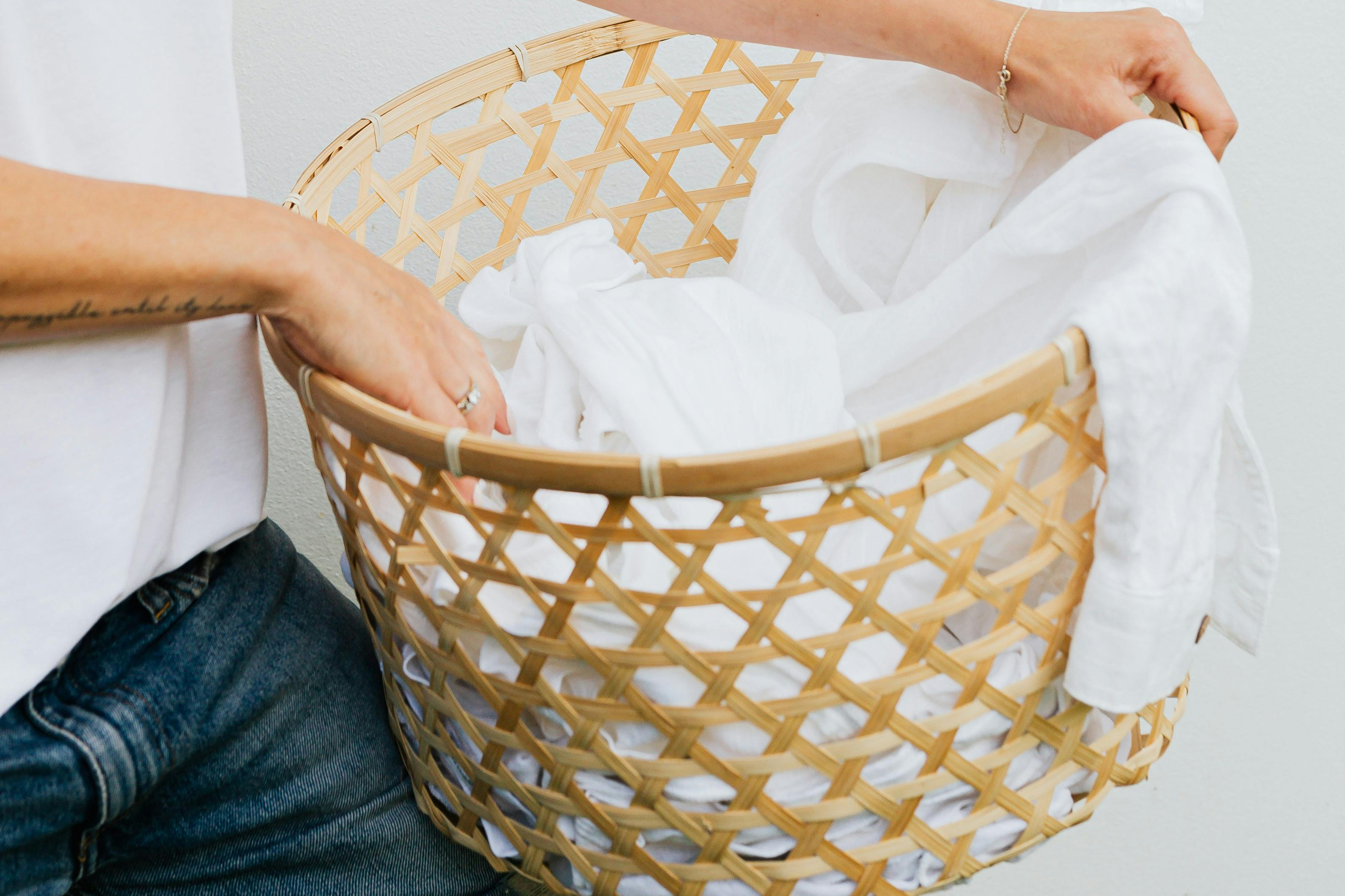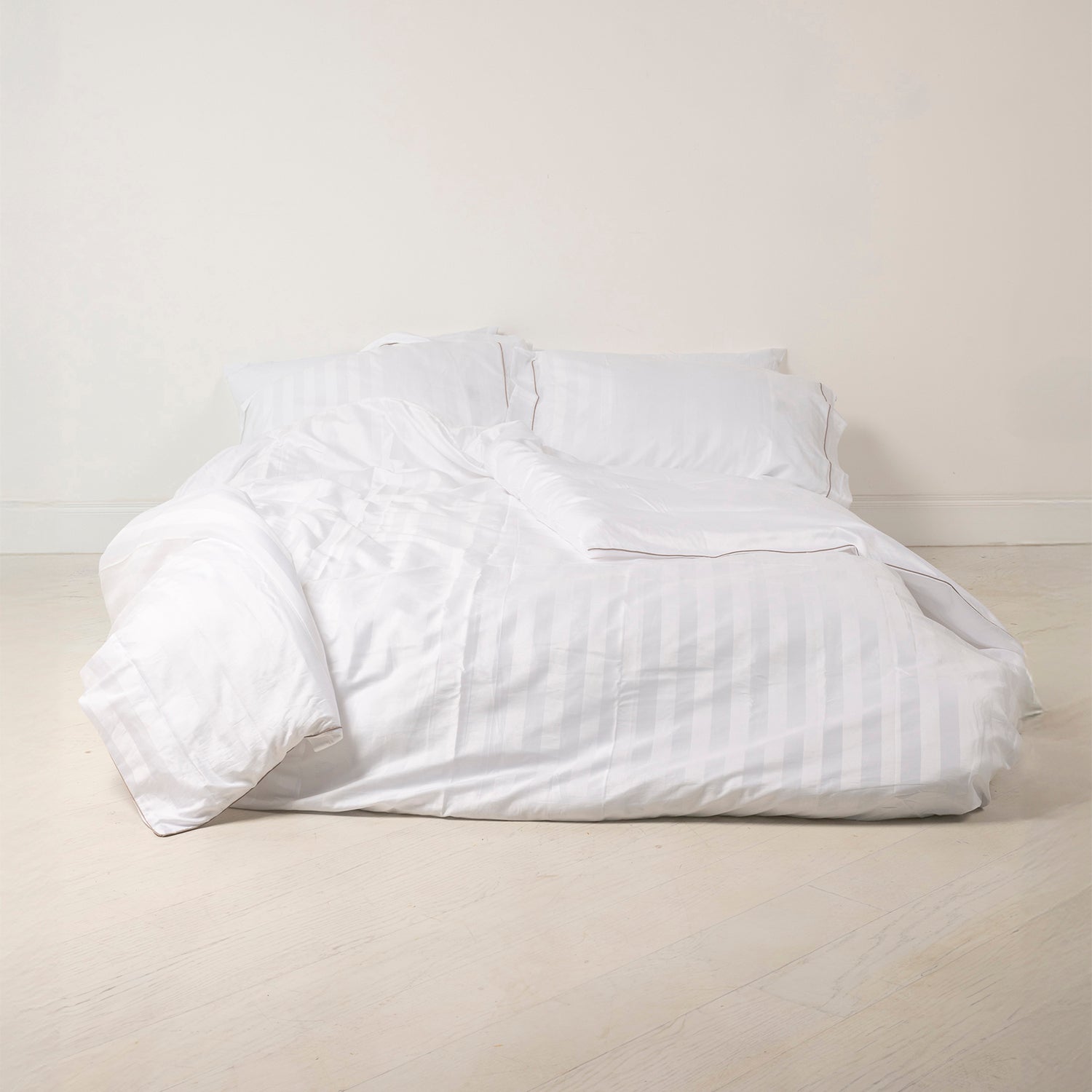
Washing instructions
Let's start with some general advice:
- Separate whites and colors : This is a basic rule, but it's worth repeating.
always, considering the damage that can be done by putting non-branded items in the washing machine
compatible with each other; - It is possible to wash towels and sheets together , since
the programs used and the temperatures are the same; - Do not overload the basket to allow for a
effective washing: washing double bed sheets, pillowcases
understood, it means having to deal with a fair amount of load already, which in the case
of small-sized washing machines may already be sufficient; - Do not load the washing machine with rolled up sheets : the
washing machine should not be done in a distracted and careless way, inserting some
sheets closed on themselves and rolled up, which would not allow water and
for the detergent to penetrate the fabric effectively; it is better to fold them
fan, to make the washing machine's task easier.
Now let's look specifically at the pre-treatment, washing and care instructions.
ironing for each product.
100% Cotton Sheets, Pillowcases, Duvet Covers
-
Pre-treatment
- Liquid Stains (wine, coffee, juice, etc.) : Dab with a solution of water and neutral soap. For more stubborn stains, use a mixture of equal parts water and white vinegar, leaving for a few minutes before rinsing.
- Oily Stains (oil, grease, creams, etc.) : Apply
of dish soap directly on the stain and leave for 5-10 minutes, then rinse with cold water. - Blood Stains : Rinse immediately with cold water, then dab with a solution of water and neutral soap or, alternatively, treat the stain with hydrogen peroxide.
- Dry Stains : For already dry stains, pre-treat with a specific stain remover for synthetic fabrics, following the product instructions.
-
Washing
Use a delicate wash cycle at a maximum temperature of 40°C. If the sheets are very dirty or have stains, you can increase the temperature up to
60°C. Avoid higher temperatures to preserve colors and prevent shrinkage.Detergent, additive, fabric softener : Use a delicate detergent specifically for garments
colored or white depending on the color of the sheets. Add half a scoop of delicate bleach or sanitizing additive and half a scoop of fabric softener to each wash.Spin : Select a medium spin speed (600-800 rpm) to reduce creases and make ironing easier.
-
Drying and Ironing
Air Drying : It is best to air dry your cotton sheets, pillowcases and duvet covers, away from direct sunlight, to preserve the colour and quality of the fabric.
Dryer : If you use the dryer, select a program dedicated to drying.
cotton or, if not present, set a delicate drying program. It is important to remove the garments from the dryer as soon as the cycle is finished to avoid creases.Ironing : Iron the sheets when they are still slightly damp to make them easier to iron.
the elimination of creases.Iron Temperature : Set the iron to a temperature
medium-high (between 150°C and 200°C) corresponding to cotton.Using Steam : If your iron has a steam function, use it to remove creases more easily.
100% Microfiber Mattress and Pillow Covers
-
Pre-treatment
- Liquid Stains (wine, coffee, juice, etc.) : Dab with a solution of water and neutral soap. For more stubborn stains, use a mixture of equal parts water and white vinegar, leaving for a few minutes before rinsing.
- Oily Stains (oil, grease, creams, etc.) : Apply dish soap directly to the stain and leave for 5-10 minutes, then rinse with cold water.
- Blood Stains : Rinse immediately with cold water, then dab with a solution of water and neutral soap or, alternatively, treat the stain with hydrogen peroxide.
- Dry Stains : For already dry stains, pre-treat with a specific stain remover for synthetic fabrics, following the product instructions.
-
Washing
Use a delicate cycle at low temperature (maximum 30°C-40°C). Avoid using too hot water to prevent damage to the fibers and the formation of creases.
Detergent : Choosing a detergent
delicate, preferably liquid. Do not use bleach, additives or fabric softeners as they can compromise the properties of the microfiber fabric, making it less absorbent and soft.Spin : Select a medium spin speed (600-800 rpm) to reduce creases and make ironing easier.
-
Drying and Ironing
Air Drying : It is best to air dry your microfiber mattress and pillow covers, away from direct sunlight, to preserve the color and quality of the fabric.
Dryer : If using a dryer, select a gentle cycle at low temperature. It is important to remove items from the dryer as soon as the cycle is finished to avoid creasing.
Avoid Direct Ironing : In general, microfiber fabrics do not
require ironing. If necessary, use an iron at a low temperature (less than 110°C) and preferably with a cotton or cloth barrier between the iron and the fabric.Using Steam : To remove light creases, use the steam function of the iron or a hand-held steamer, holding the device a few metres away.
centimeter away from the fabric.
Duvets, Quilts and Decorative Pillows
-
Pre-treatment
- Liquid stains (coffee, wine, juices) : Dab with a solution of warm water and neutral soap. Leave to act for a few minutes.
minute, then dab again with clean water. - Greasy Stains (oil, butter) : Apply a small amount of
dish soap directly on the stain and leave for 5-10 minutes, then rinse with cold water. - Blood Stains : Rinse immediately with cold water, then apply a solution of water and neutral soap. For more resistant stains, use hydrogen peroxide (oxygenated water) diluted with water.
- Dry Stains : For stains that are already dry, use a specific stain remover for synthetic fabrics, following the product instructions, and leave to act for the recommended time.
- Liquid stains (coffee, wine, juices) : Dab with a solution of warm water and neutral soap. Leave to act for a few minutes.
-
Washing
Use a delicate cycle or alternatively a specific cycle for synthetic garments at a maximum temperature of 30°C. Make sure that the washing machine is large enough to allow the duvet/quilt to move freely.
Detergent : Use a gentle liquid detergent, without optical brighteners or fabric softeners, to protect the microfiber fibers and padding.
Extra Rinse : Run an extra rinse cycle to remove
completely remove any detergent residue, which could damage the fabric or cause skin irritation.Spin : Select a medium spin speed (800-1000 rpm) to avoid damaging the padding and prevent lumps from forming.
-
Drying and Ironing
Air Drying : It is best to lay your duvet/quilt out in the open on a flat surface, away from direct sunlight, to prevent fading and maintain the quality of the fabric and filling. Shake occasionally to evenly distribute the filling.
Dryer : If using the dryer, set it to a gentle cycle at low temperature. Place a few clean tennis balls in the dryer.
to help keep the filling fluffy and evenly distributed. Remove the comforter/quilt from the dryer as soon as the cycle is complete to avoid creasing.Ironing : In general, microfiber upholstery does not require ironing. Ironing may damage the padding and the outer fabric. Any wrinkles will naturally smooth out with use or drying.
Use Steam with Caution : If absolutely necessary, use a steamer at a distance (about 15-20cm) to remove light creases, but avoid applying direct heat to the fabric.
tissue.Folding : fold neatly and use it, spread out on the bed, as soon as it is ready. During the change of seasons, fold it neatly and store it in a package that can protect it from mites and dust, in fabric or plastic.

